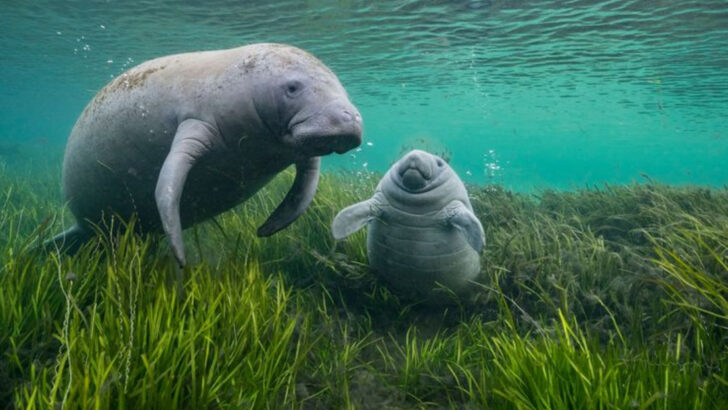Manatees are basically the underwater teddy bears of the animal kingdom—big, round, and ridiculously lovable. But don’t let their slow-moving, grass-munching lifestyle fool you. These gentle giants are full of surprises.
They can hold their breath for up to 20 minutes, change their teeth like conveyor belts, and even understand human commands (not that they care to listen). Oh, and their closest relatives? Elephants. Yes, really.
Despite their peaceful nature, manatees have faced more danger than they deserve. Boats, pollution, and habitat loss have made survival a struggle, but these resilient creatures keep floating on.
If you think manatees are just slow-moving sea cows, think again. From their mind-blowing biology to their adorable quirks, these marine mammals deserve way more appreciation!
Manatee Size and Weight
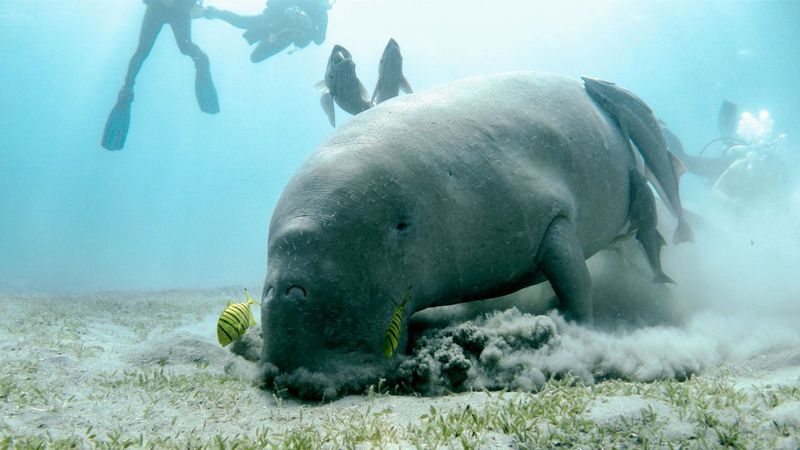
Manatees are among the largest aquatic mammals, with adults typically weighing between 800 to 1,200 pounds and reaching lengths of up to 13 feet. Despite their hefty size, these gentle giants move gracefully through the water, using their powerful tails to propel themselves. Their size helps them maintain warmth in cooler waters, highlighting their unique adaptation to various environments. Manatees’ substantial size also plays a crucial role in deterring predators, making them less vulnerable in their natural habitats. Observing a manatee’s size up close is an awe-inspiring experience, revealing the majesty of these incredible creatures.
Manatee’s Gentle Nature
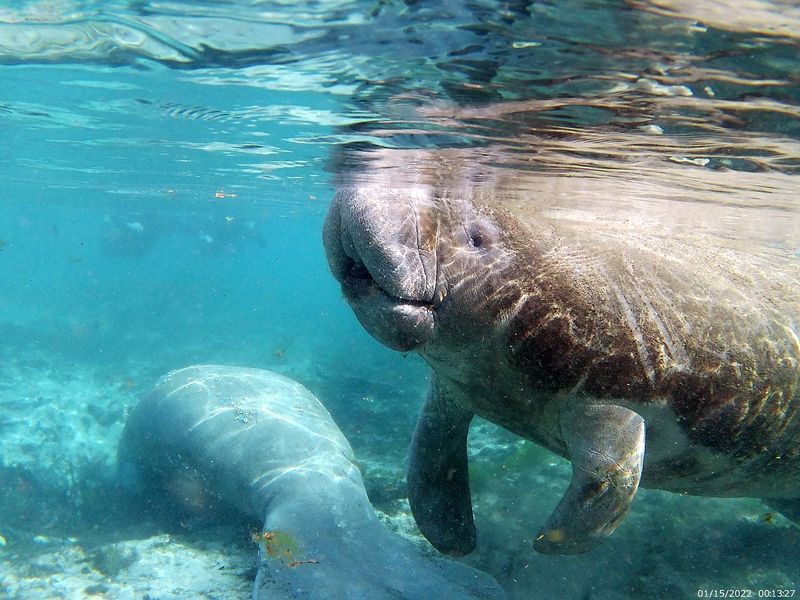
Manatees are renowned for their gentle and docile nature. Unlike many marine animals, they pose no threat to humans and are often curious about divers and snorkelers. This amicable disposition makes them popular among wildlife enthusiasts who seek peaceful interactions in the wild. Manatees’ gentle behavior is reflected in their interactions with other sea creatures. They often coexist peacefully with various fish and turtles, showcasing their harmonious existence within the marine ecosystem. Their tranquil nature serves as a reminder of the beauty of peaceful coexistence in the animal kingdom.
Manatee Mating Habits
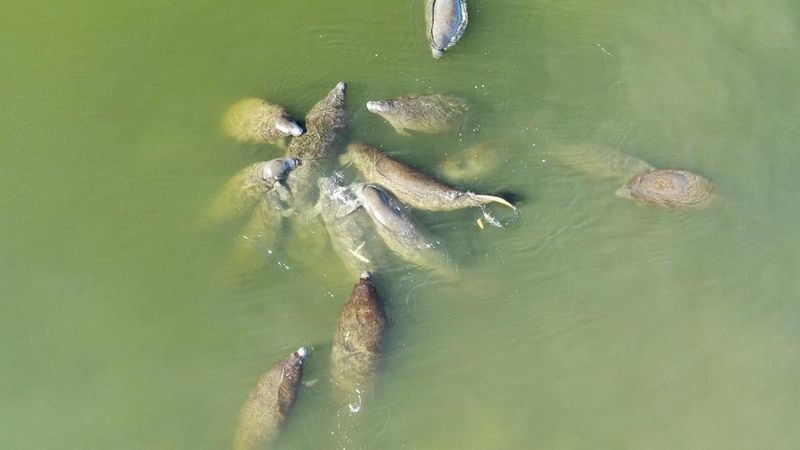
Manatees have intriguing mating habits that involve forming small herds during the mating season. These gatherings, known as mating herds, consist of multiple males and a single female. The males compete for the female’s attention, but their competition remains non-aggressive and gentle, mirroring their overall nature. Mating usually occurs in warm, shallow waters where manatees feel safe and comfortable. This behavior ensures the continuation of the species while maintaining the respectful and gentle interactions manatees are known for. Observing a mating herd is a unique experience, offering insight into the social dynamics of these fascinating creatures.
Manatee Diet
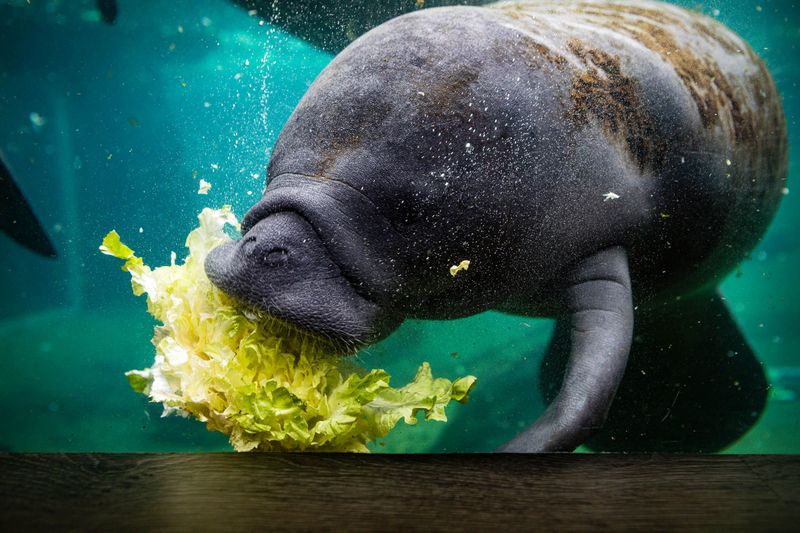
Manatees are herbivores, primarily feeding on seagrass and other aquatic vegetation. Their diet is essential for maintaining the health of marine ecosystems, as their grazing helps prevent overgrowth of seagrasses. A single manatee can consume up to 10% of its body weight in vegetation daily, showcasing their significant role as ecosystem engineers. Their slow digestion process ensures they extract maximum nutrients from their food, supporting their large size and energy needs. By maintaining balanced vegetation growth, manatees contribute to the overall health and stability of their habitats.
Manatee Communication

Manatees communicate through a variety of sounds, including chirps, whistles, and squeaks. These vocalizations are crucial for maintaining social bonds, especially between mothers and their calves. In addition to sounds, manatees use body language and touch to express themselves. These gentle interactions reflect their peaceful nature and emphasize the importance of connection within their communities. Manatee communication plays a vital role in their survival, helping them navigate their environment and locate food sources. Understanding these interactions offers a glimpse into the complex social structures of these endearing creatures.
Manatees’ Lifespan
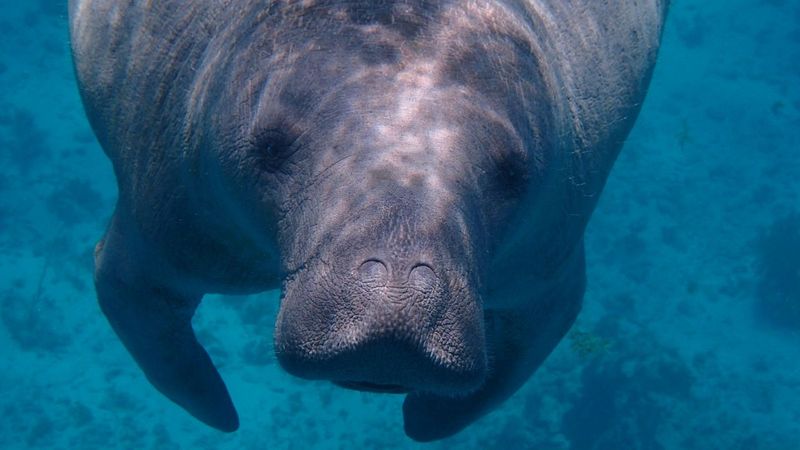
Manatees can live up to 60 years in the wild, a testament to their resilience and adaptability. Their long lifespan is supported by their slow metabolism and careful navigation of their environment. Despite facing threats from human activities, such as boat collisions and habitat loss, manatees continue to thrive in protected areas. Conservation efforts aim to extend their lifespan by minimizing human-related dangers. Observing a senior manatee in its natural habitat is a heartwarming sight, showcasing the tenacity and enduring spirit of these remarkable animals.
Manatee Conservation
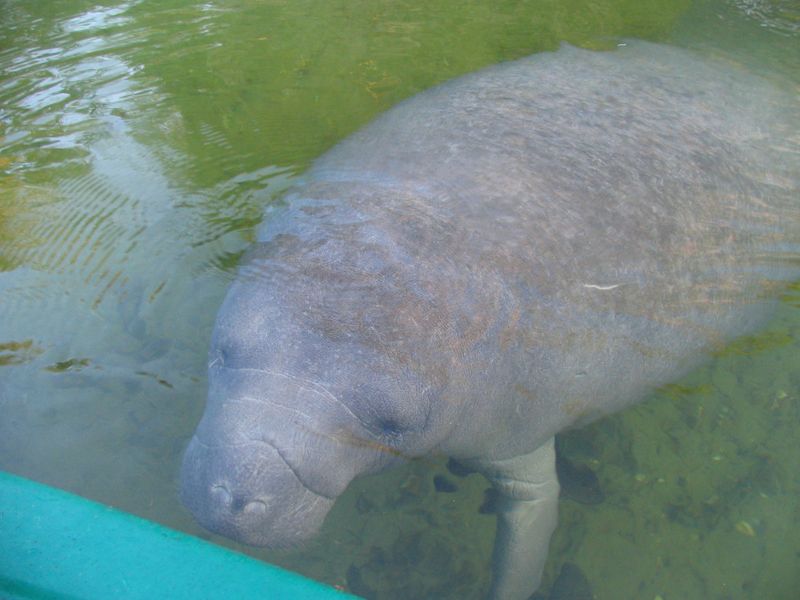
Conservation efforts are crucial for protecting manatees from numerous threats, including habitat destruction and boat collisions. Organizations work tirelessly to create safe environments and raise awareness about the importance of manatee protection. Educational programs and community involvement play a significant role in conservation, encouraging individuals to take action for these gentle giants. By establishing protected areas and enforcing boating regulations, conservationists aim to reduce human impact on manatee populations. The success of these initiatives is vital for ensuring the survival of manatees and preserving their natural habitats for future generations.
Manatee’s Role in Ecosystems
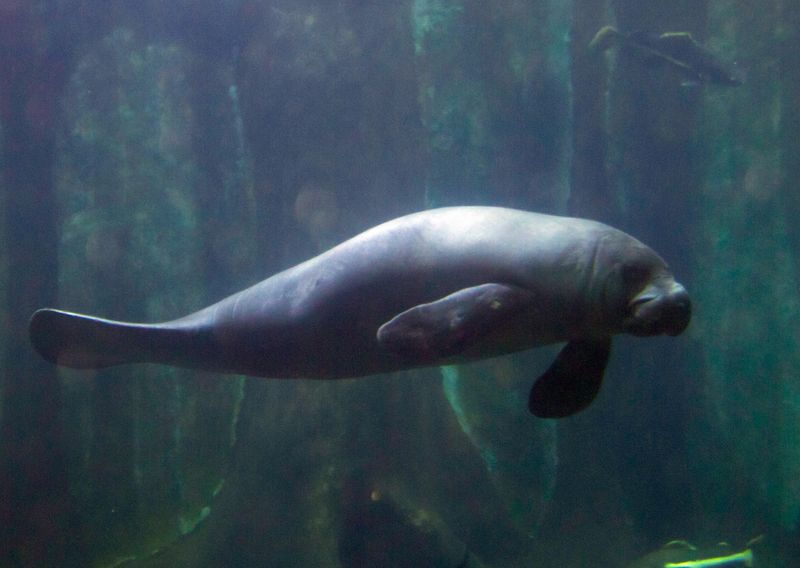
Manatees are vital for maintaining the health of aquatic ecosystems. Their grazing habits control the growth of seagrass and aquatic plants, preventing overgrowth that can harm other marine species. This ecological role supports a balanced and diverse environment, benefiting countless sea creatures. By ensuring healthy seagrass beds, manatees contribute to the overall productivity of their habitats, promoting biodiversity. Their presence is a testament to the intricate connections within marine ecosystems, highlighting the importance of protecting these gentle giants. Observing their role in nature underscores their significance in maintaining ecological harmony.
Unique Manatee Adaptations
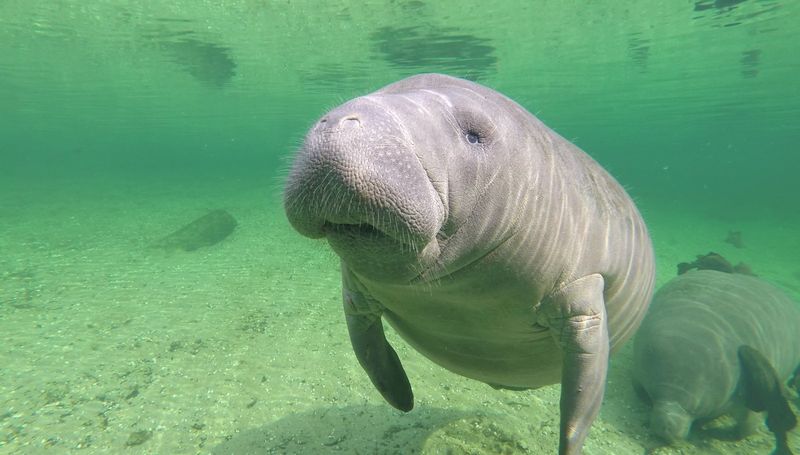
Manatees possess unique adaptations that enable them to thrive in aquatic environments. Their paddle-shaped tails provide powerful propulsion, while their flippers assist in steering and maneuvering through the water. These adaptations allow manatees to navigate their habitats efficiently, despite their large size. Their sensitive whiskers, called vibrissae, help detect changes in water currents and locate food. These specialized features demonstrate the remarkable evolution of manatees, showcasing their ability to adapt to diverse marine conditions. Appreciating these adaptations offers insight into the evolutionary journey of these captivating creatures.
Manatee’s Slow Movement
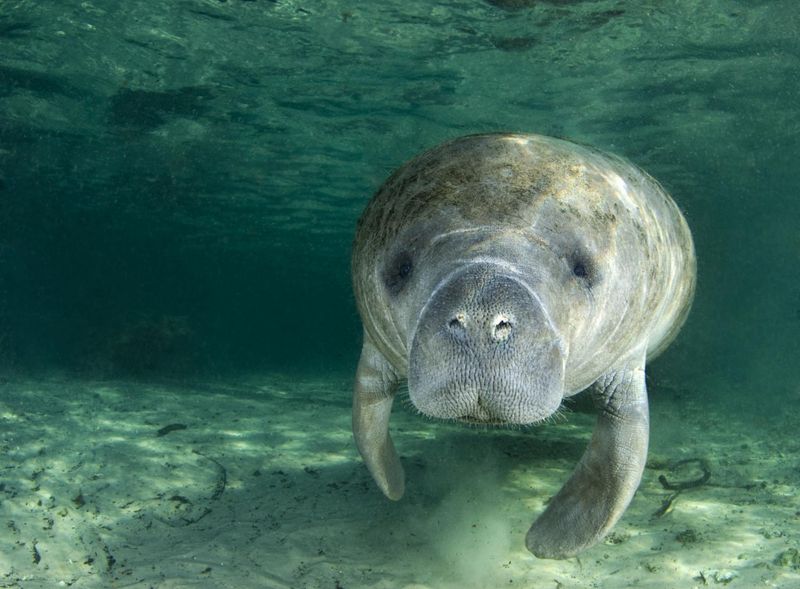
Manatees move at a leisurely pace, typically swimming at speeds of 3 to 5 miles per hour. Their slow movement is a result of their large size and low metabolic rate. This unhurried pace allows manatees to conserve energy while navigating their environment. Despite their gentle nature, manatees can accelerate quickly when threatened, reaching speeds of up to 20 miles per hour. Their ability to balance slow movement with bursts of speed highlights their adaptability and survival skills. Observing a manatee’s graceful glide is a calming experience, embodying the tranquility of these gentle giants.
Manatees’ Social Behavior
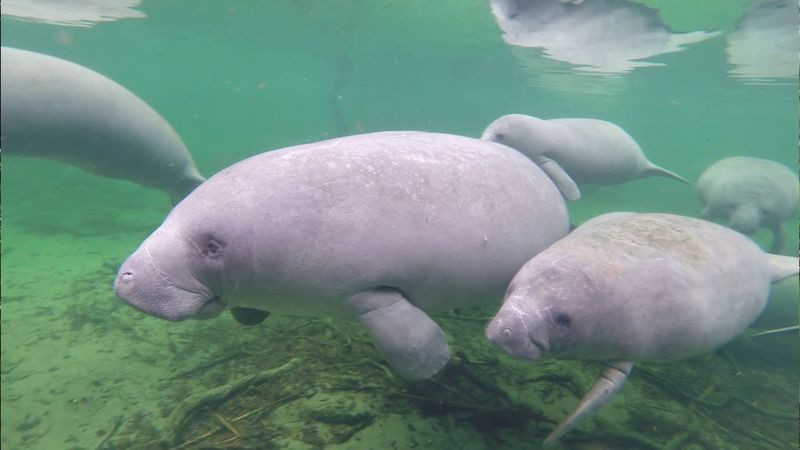
Manatees are social creatures that often gather in groups, known as aggregations, especially during the winter months. These gatherings occur in warm waters where manatees seek refuge from colder temperatures. Social interactions among manatees include playful behaviors, such as gentle nudging and rolling. These activities strengthen social bonds and provide a sense of community among the herd. The social nature of manatees highlights their need for companionship and underscores the importance of preserving their habitats to support these interactions. Watching them interact is a delightful experience, revealing the joy of communal living.
Manatee Mothers and Calves
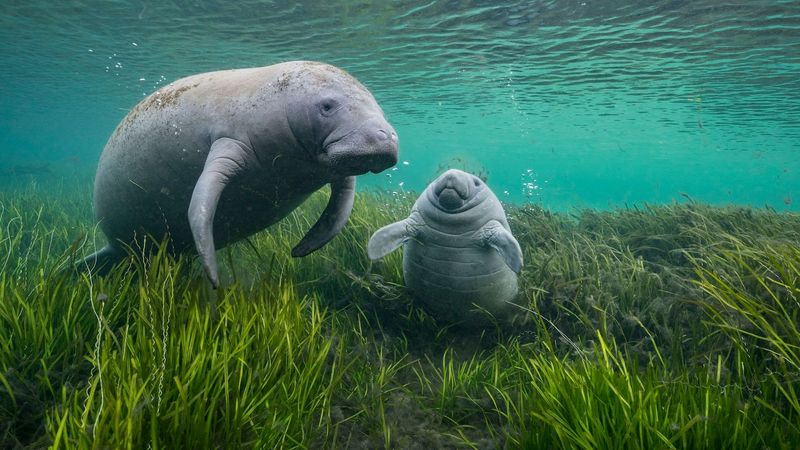
The bond between a manatee mother and her calf is one of the strongest in the animal kingdom. Calves remain close to their mothers for up to two years, learning essential survival skills and navigation. This extended period of maternal care ensures that calves are well-prepared for independent life in the wild. Manatee mothers are attentive and nurturing, often seen guiding their young through waters and providing protection. The sight of a mother and calf swimming side by side is a touching reminder of the enduring bond between parent and child, reflecting the nurturing nature of these creatures.
Manatees’ Curiosity
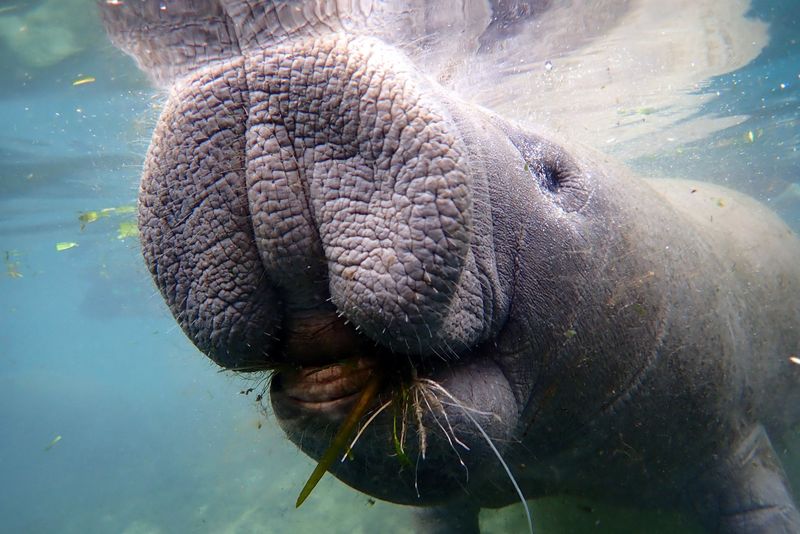
Manatees are naturally curious creatures, often approaching boats and divers with interest. Their inquisitive behavior showcases their intelligence and adaptability to new stimuli. This curiosity, however, can lead to dangerous encounters with boats, underscoring the need for cautious navigation in manatee-inhabited waters. Their interest in exploring their surroundings highlights the need for protected areas where manatees can satisfy their curiosity without risk. The playful and curious nature of manatees endears them to many, offering a glimpse into their intelligent and sociable minds. Observing their curiosity is both a privilege and a responsibility.

